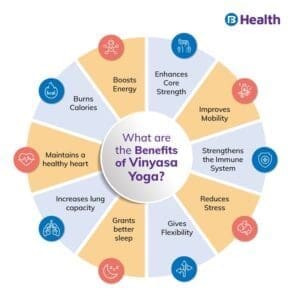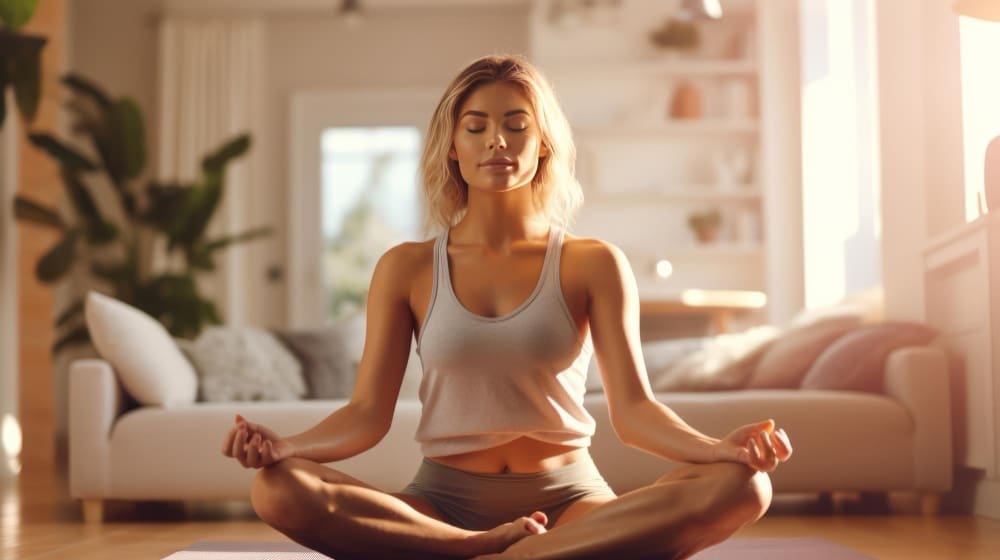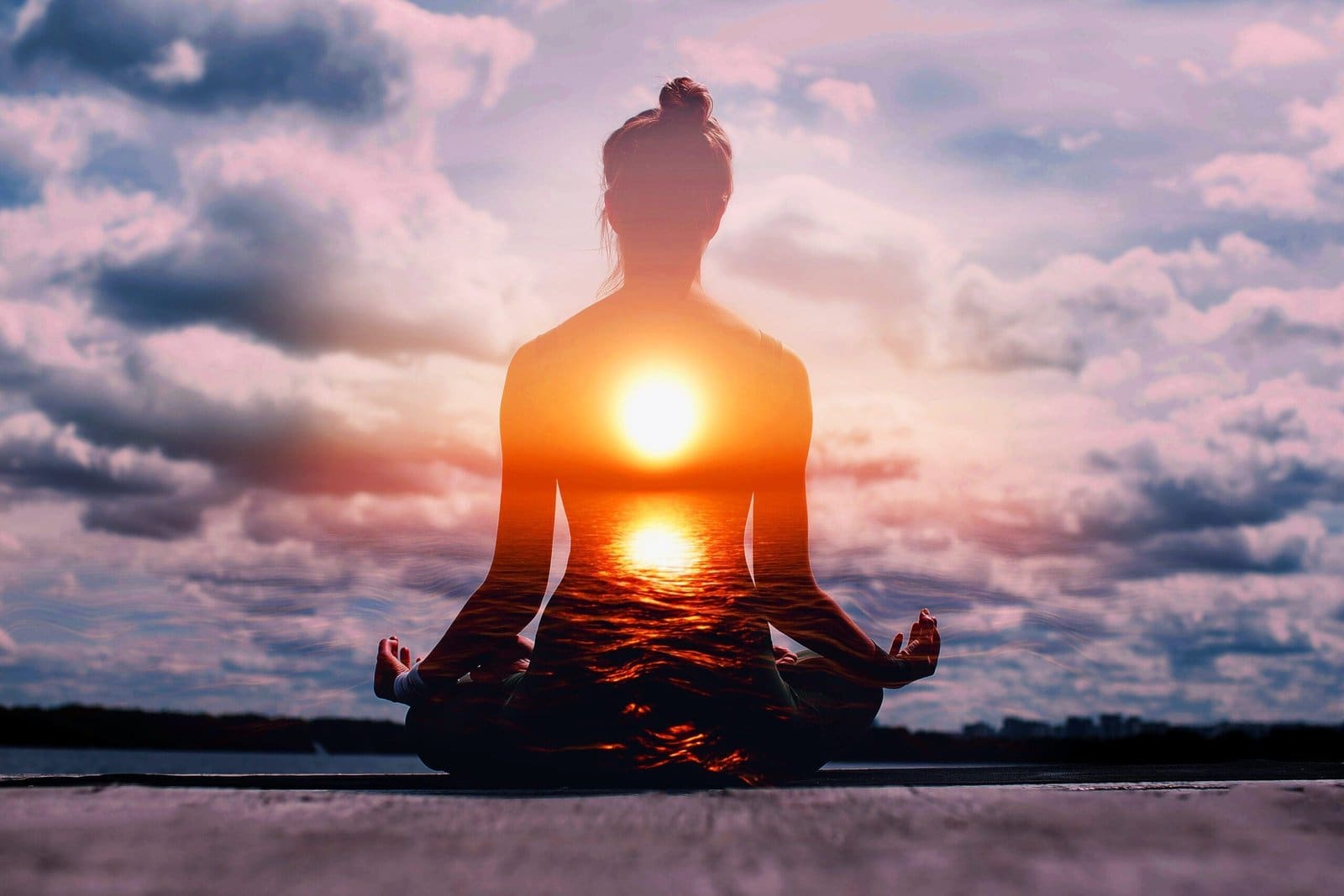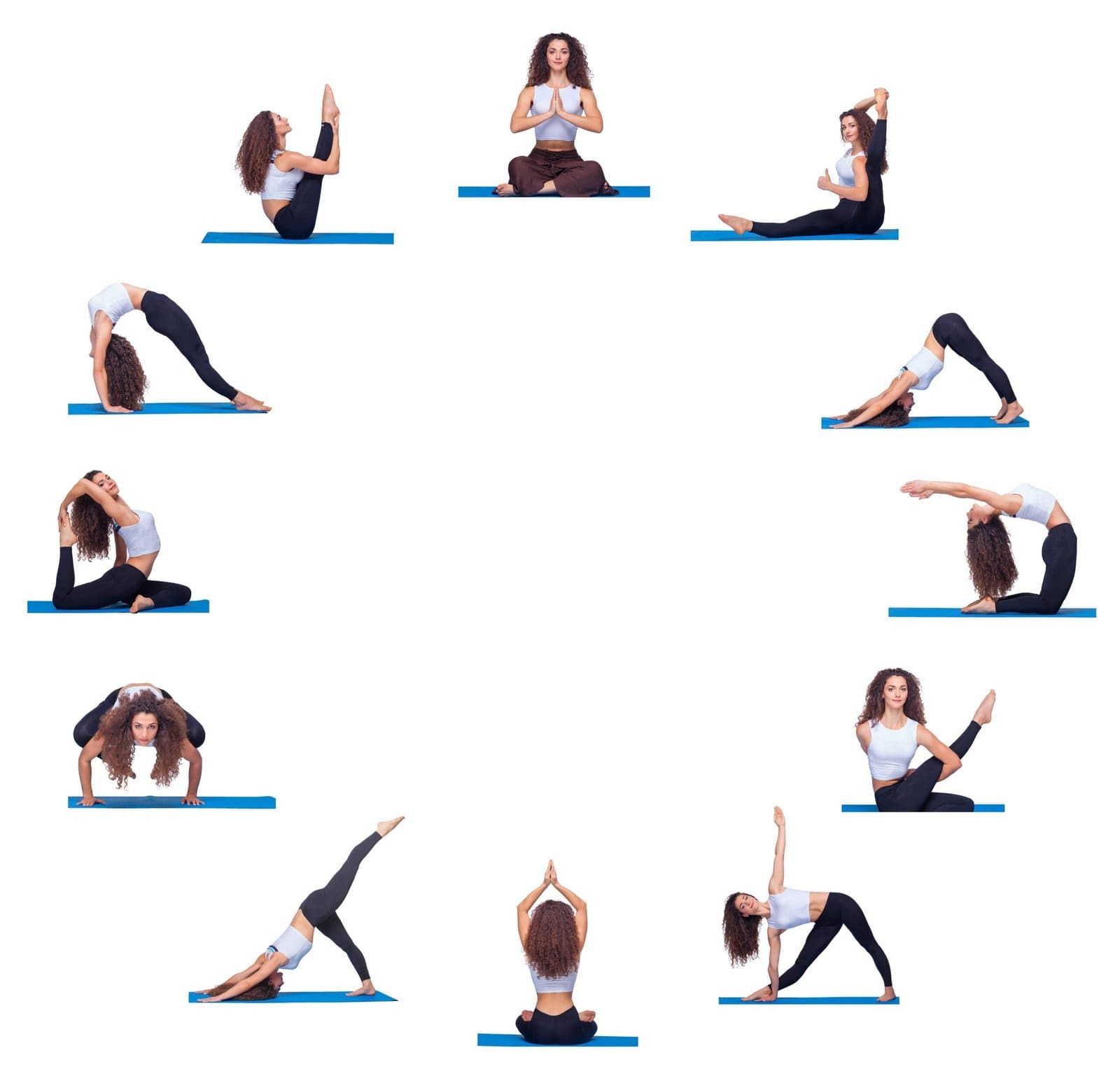Unlocking the Path to Wellness: Exploring Different Types of Yoga
In today’s fast-paced world, it’s crucial to prioritize our well-being and find effective ways to unwind and destress. One practice that has gained immense popularity is yoga. With its origins deeply rooted in ancient India, yoga offers a holistic approach to wellness, encompassing the physical, mental, and spiritual aspects of our lives. In this comprehensive guide, we will delve into the diverse world of yoga, exploring different types of yoga and their unique benefits. So, roll out your mat, take a deep breath, and let’s embark on a transformative journey of self-discovery and wellness.
1. Hatha Yoga: Aligning Body and Breath
At the foundation of all yoga styles, we find Hatha Yoga. This gentle practice focuses on aligning the body and breath, incorporating physical postures (asanas), breathing techniques (pranayama), and meditation. By embracing Hatha Yoga, individuals can enhance their flexibility, build strength, and experience an overall sense of well-being.
2. Vinyasa Yoga: Flowing with Breath and Movement
Vinyasa Yoga is a dynamic and flowing style that synchronizes movement with breath. Through graceful transitions between poses, practitioners cultivate strength, endurance, and mindfulness. This yoga style not only improves physical fitness but also helps release mental and emotional tension, leading to increased focus and clarity.
3. Ashtanga Yoga: The Eight-Limbed Path to Discipline
Ashtanga Yoga follows the eight-limbed path outlined by the sage Patanjali. This structured and rigorous practice involves a predetermined series of poses combined with synchronized breathing. By practicing Ashtanga Yoga, individuals can enhance physical strength, increase flexibility, and develop discipline and concentration. It offers a transformative journey that nurtures both the body and the mind.
4. Bikram Yoga: Heat-Induced Detoxification
Bikram Yoga, also known as hot yoga, takes place in a heated room typically set to 105°F (40.6°C). The practice consists of a specific sequence of 26 postures and two breathing exercises. The heat intensifies the benefits, allowing for deeper stretching and detoxification through sweating. Bikram Yoga promotes cardiovascular health, improves circulation, and aids in weight management.
5. Kundalini Yoga: Awakening the Inner Energy
Kundalini Yoga focuses on awakening the dormant spiritual energy within each individual. This practice incorporates physical postures, breathwork, chanting, and meditation to promote self-awareness and spiritual growth. Kundalini Yoga cultivates vitality, reduces stress, and enhances intuition, leading to a balanced and joyful life.
6. Restorative Yoga: Deep Relaxation and Healing
Restorative Yoga is a gentle and nurturing practice that promotes deep relaxation and healing. With the support of props like bolsters, blankets, and blocks, practitioners are fully supported in each pose, allowing them to release tension and restore the body’s natural equilibrium. This style of yoga is particularly beneficial for reducing stress, improving sleep quality, and enhancing overall well-being.
7. Yin Yoga: Embracing Stillness and Surrender
Yin Yoga is a slow-paced and meditative practice that targets the connective tissues, such as ligaments, tendons, and fascia. Poses are held for an extended period,
typically ranging from one to five minutes, allowing for deep stretching and releasing physical and emotional blockages. Yin Yoga cultivates mindfulness, improves flexibility, and stimulates the flow of vital energy throughout the body.
Types of Yoga: A Path to Wellness
Practicing different types of yoga offers a multitude of benefits for your overall well-being:
1. Physical Well-being: Regular practice of yoga enhances strength, flexibility, and posture. It improves cardiovascular health, aids in weight management, and reduces the risk of chronic diseases.
2. Mental and Emotional Health: Yoga reduces stress, anxiety, and depression. It enhances focus, concentration, and mental clarity, leading to a balanced state of mind.
3. Spiritual Growth: Yoga provides a pathway to self-discovery and spiritual awakening. Through meditation and mindfulness, practitioners develop a deeper connection with their inner selves and the world around them.
4. Increased Energy and Vitality: Yoga stimulates the flow of vital energy (prana) in the body, leaving individuals feeling rejuvenated, energized, and ready to tackle life’s challenges.
5. Improved Sleep Quality: Regular practice of yoga promotes relaxation and reduces insomnia, resulting in improved sleep quality and overall well-restedness.
6. Enhanced Immune Function: Yoga supports the body’s immune system, helping to prevent illness and promote overall well-being.
7. Increased Self-Awareness: Yoga cultivates self-awareness and self-acceptance, allowing individuals to develop a positive relationship with themselves and others.
Conclusion:
Incorporating different types of yoga into your life can be a transformative journey towards improved physical, mental, and spiritual well-being. Whether you’re seeking strength, flexibility, relaxation, or self-discovery, the diverse world of yoga has something to offer. So, roll out your mat, breathe deeply, and let the magic of yoga guide you towards a path of wellness and self-transformation.
Disclaimer
The content is purely informative and educational in nature and should not be construed as medical advice. Please use the content only in consultation with an appropriate certified medical or healthcare professional

Chair Yoga For Seniors
Discover the benefits of chair yoga for seniors! Enhance flexibility, strength, and balance with gentle movements. Start your journey to well-being today!

Vinyasa Flow Yoga Benefits
Discover the transformative benefits of Vinyasa Flow Yoga for your body and mind. Enhance flexibility, strength, and mindfulness in this dynamic practice.

Different Types Of Yoga And Benefits
Explore Different Types Of Yoga And Benefits and their advantages. Enhance flexibility, relieve stress, and build strength with diverse yoga practices for well-being.

5 Different Types Of Yoga
Explore “5 Different Types Of Yoga,” from dynamic Vinyasa to serene Yin, for holistic well-being.

Exploring Yin Yoga: Essential Poses For Deep Stretching
Explore Yin Yoga’s deep stretching poses for enhanced flexibility, relaxation, and balance. Dive into a transformative practice with us.

10 Essential Yoga Types: Embrace the Diversity
Yoga Types: Are you eager to navigate the world of yoga but uncertain about the starting point? We’ve got you covered! In this piece, we’ll dive deep into the diversity of Yoga Types, presenting ten distinct forms you shouldn’t miss out on today. From the foundational Hatha yoga to the vigorous power yoga, there’s a fit for everyone. Regardless if you’re a novice or a seasoned yogi, this article will guide you through various Yoga Types, enriching your routine and instilling a harmonious balance and tranquility in your life. So, roll out your yoga mat and embark on this enlightening journey through the diverse realm of yoga! 1. Hatha Yoga Introduction to Hatha Yoga Hatha Yoga is one of the most well-known and widely practiced forms of yoga. It originated in ancient India and focuses on physical postures (asanas) and breath control (pranayama). In Sanskrit, “ha” means sun and “tha” means moon, symbolizing the balance of opposing forces within the body. Hatha Yoga aims to create harmony between the mind, body, and spirit through mindful movement and controlled breathing. Benefits of Hatha Yoga Hatha Yoga offers numerous benefits for both the body and mind. Regular practice can improve flexibility, balance, and strength. It also helps to increase body awareness and promote relaxation. Hatha Yoga is a great way to relieve stress and reduce anxiety, as it encourages deep breathing and mindful movements. Additionally, it can improve posture and help prevent injuries by enhancing body alignment. Hatha Yoga Poses Hatha Yoga includes a wide range of poses that vary in difficulty and intensity. Some common poses include Mountain Pose (Tadasana), Downward-Facing Dog (Adho Mukha Svanasana), Warrior 1 (Virabhadrasana 1), and Child’s Pose (Balasana). These poses target different parts of the body, such as the legs, core, and back, providing a full-body workout. Hatha Yoga also incorporates gentle stretches and relaxation poses to release tension and promote a sense of calm. Hatha Yoga Classes Hatha Yoga classes are widely available and suitable for practitioners of all levels, from beginners to advanced yogis. In a typical Hatha Yoga class, you can expect a combination of physical postures, breathing exercises, and meditation. Classes may vary in duration, but they usually run for about 60 to 90 minutes. Hatha Yoga classes are led by experienced instructors who guide students through each pose, ensuring proper alignment and offering modifications when needed. 2. Vinyasa Yoga Introduction to Vinyasa Yoga Vinyasa Yoga, also known as flow yoga, is a dynamic and fast-paced style of yoga that synchronizes breath with movement. It emphasizes continuous transitions between poses, creating a seamless flow of energy throughout the practice. Vinyasa Yoga originated from Hatha Yoga and has gained popularity for its creative sequences and vigorous nature. Benefits of Vinyasa Yoga Vinyasa Yoga offers a multitude of benefits for both the body and mind. The flowing movements help build strength, stamina, and cardiovascular fitness. The breath-focused aspect of Vinyasa Yoga promotes mindfulness and concentration, leading to improved mental clarity and focus. Regular practice can also enhance flexibility, coordination, and body awareness. Vinyasa Yoga Poses Vinyasa Yoga encompasses a wide array of poses, including standing, seated, and balancing poses. Some common poses in Vinyasa Yoga sequences include Sun Salutations (Surya Namaskar), Warrior poses (Virabhadrasana), Plank pose (Phalakasana), and Tree pose (Vrksasana). These poses are often linked together through transitional movements, creating a fluid and dynamic practice. Vinyasa Yoga Classes Vinyasa Yoga classes are energetic and suitable for practitioners of various levels. Each class is unique, as instructors design sequences that cater to different themes, levels of difficulty, and target areas of the body. Classes typically begin with a warm-up followed by a series of dynamic poses, and end with a cool-down period. Vinyasa Yoga classes provide a challenging yet enjoyable experience that leaves practitioners feeling rejuvenated and invigorated. 3. Ashtanga Yoga Introduction to Ashtanga Yoga Ashtanga Yoga, often referred to as “eight-limbed yoga,” is a dynamic and physically demanding form of yoga. It follows a specific sequence of poses that are practiced in a predetermined order. Ashtanga Yoga focuses on synchronizing breath with movement and aims to purify the body and mind through intense physical exertion. Benefits of Ashtanga Yoga Ashtanga Yoga offers a range of benefits for practitioners. The repetitive nature of the practice helps build strength, endurance, and flexibility. It also enhances focus and concentration, as the synchronized breath and movement require full attention. Ashtanga Yoga promotes detoxification of the body through the generation of heat and sweat. Regular practice can lead to improved posture, weight management, and a sense of inner calm. Ashtanga Yoga Poses Ashtanga Yoga follows a set sequence of poses divided into six series. The Primary Series (Yoga Chikitsa) is the first series and focuses on realigning and detoxifying the body. It includes standing poses, forward folds, hip openers, and inversions. The subsequent series introduce more challenging poses and variations to further deepen the practice. Ashtanga Yoga poses require strength, flexibility, and perseverance. Ashtanga Yoga Classes Ashtanga Yoga classes are typically led in a traditional Mysore style, where students practice the Ashtanga sequence at their own pace under the guidance of an experienced teacher. Beginners can start with shorter sessions and gradually increase their practice. Mysore-style classes allow for personalized attention and modifications based on individual abilities. The disciplined and structured nature of Ashtanga Yoga creates a focused and meditative environment. 4. Bikram Yoga Introduction to Bikram Yoga Bikram Yoga, created by Bikram Choudhury, is a style of yoga practiced in a heated room. It consists of a series of 26 poses and two breathing exercises. Bikram Yoga follows a specific sequence and is performed in a room heated to approximately 105 degrees Fahrenheit (40 degrees Celsius) with high humidity. Benefits of Bikram Yoga Bikram Yoga offers various physical and mental benefits. The heat and humidity in the room help warm up the muscles and increase flexibility, allowing for deeper stretches. It also promotes detoxification through sweat, helping to rid the body of toxins. The sequence of








